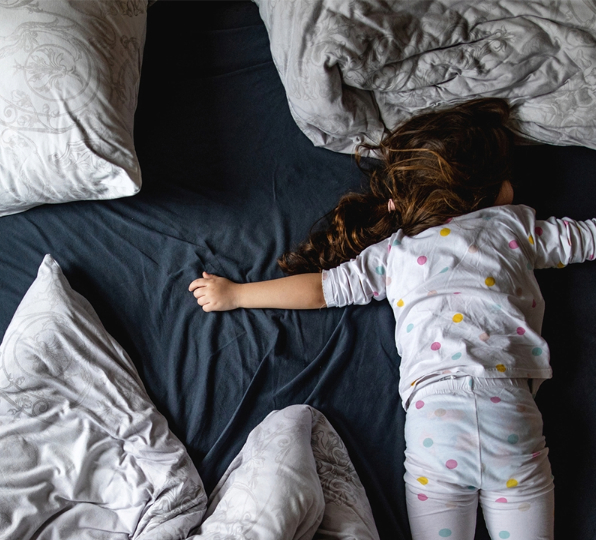Introduction:
More than just a luxury, a good night’s sleep is an essential component of general wellbeing. We frequently neglect to establish a regular bedtime routine because of our hectic lifestyles. Nevertheless, a well-planned regimen might hold the secret to releasing the restorative potential of sound sleep. Your go-to resource for creating a bedtime routine that not only encourages relaxation but also contributes to a more restful and restorative night’s sleep is “Soothing Nights: A Comprehensive Guide to Establishing a Bedtime Schedule for Optimal Sleep”. Come along as we explore ten all-encompassing yet doable suggestions for turning your nights into peaceful havens.
1. Set a Consistent Bedtime
Introduction to Consistency: The cornerstone of a successful bedtime routine is the establishment of a consistent bedtime. Our bodies thrive on routine, and having a designated time to go to bed each night helps regulate our internal clock, promoting better sleep quality.
Choosing a Realistic Time: The first step is to choose a bedtime that aligns with your lifestyle. Factor in the recommended 7-9 hours of sleep, considering work schedules, family commitments, and personal preferences. This consistency helps synchronize your body’s natural sleep-wake cycle.
Benefits of Consistency: Consistency in bedtime reinforces your circadian rhythm, allowing your body to anticipate and prepare for sleep at the same time each night. Over time, this regularity enhances the quality of your sleep, making it more restful and rejuvenating.
2. Create a Relaxing Pre-Bedtime Environment
Dim the Lights: As bedtime approaches, dimming the lights in your home creates a conducive atmosphere for winding down. The gradual reduction in light signals to your body that it’s time to transition from wakefulness to sleep.
Reduce Screen Time: The blue light emitted by electronic devices can suppress melatonin production, making it harder to fall asleep. Limit screen time at least an hour before bedtime to allow your brain to unwind and produce the sleep-inducing hormone naturally.
Create a Calming Atmosphere: Consider using warm-toned, low-intensity lighting to create a cozy ambiance. Soft lighting paired with soothing colors in your bedroom fosters a sense of calmness, inviting relaxation as you prepare for sleep.
3.Unwind with a Relaxing Activity
Reading or Journaling: Engaging in calming activities such as reading a book or journaling can be an excellent prelude to sleep. Opt for genres or topics that are soothing rather than stimulating, allowing your mind to transition into a more relaxed state.
Gentle Stretching or Yoga: Incorporate gentle stretching or a short yoga session into your pre-bedtime routine. These activities help release tension in your muscles, promoting physical relaxation and signaling to your body that it’s time for rest.
The Importance of Wind-Down Time: Creating a buffer of wind-down time allows your mind and body to shift from the demands of the day to a more serene state. It’s an opportunity to detach from the stressors and demands, setting the stage for a peaceful night’s sleep.
4.Practice Mindfulness and Deep Breathing
Mindful Breathing Exercises: Integrate mindfulness into your bedtime routine through deep breathing exercises. Focus on slow, deliberate breaths to calm your mind and signal to your body that it’s time to transition into a more relaxed state.
Guided Meditation or Relaxation Apps: Explore guided meditation or relaxation apps that provide soothing audio experiences. These tools can guide you through calming exercises, helping to quiet the mind and prepare for restful sleep.
The Power of Mindfulness: Mindfulness techniques, including deep breathing and meditation, have been proven to reduce stress and improve sleep quality. By incorporating these practices into your bedtime routine, you can cultivate a peaceful mindset conducive to rest.
5.Establish a Hygiene Ritual
Warm Bath or Shower: Incorporating a warm bath or shower into your nightly routine not only promotes personal hygiene but also serves as a powerful relaxation tool. The rise and subsequent fall in body temperature signal to your body that it’s time to wind down.
Skincare Routine: Developing a calming skincare routine before bedtime is not only nurturing for your skin but also contributes to the overall sensory experience. Applying gentle, fragrant-free lotions or oils can create a soothing ritual that cues your body for sleep.
The Connection Between Hygiene and Sleep: The act of engaging in a hygiene ritual has psychological benefits. It serves as a transition from the activities of the day to the restorative phase of sleep. The sensory experience and repetitive nature of the ritual provide comforting cues to your body that sleep is imminent.
6. Prepare Your Sleep Environment
Comfortable Bedding: Investing in comfortable and cozy bedding is essential for creating a sleep-friendly environment. Your mattress, pillows, and sheets should contribute to a sense of comfort and relaxation, inviting you to unwind.
Temperature and Ventilation: Ensuring your bedroom is at an optimal temperature is crucial for a good night’s sleep. A cool and well-ventilated room promotes better sleep. Experiment with bedding layers to find the ideal level of warmth that suits your preferences.
De-Clutter Your Space: A clutter-free and organized bedroom can positively impact your mental state. Create a serene sleep environment by removing unnecessary items and promoting a sense of order. A tidy space contributes to a calm and peaceful mindset.
7. Limit Stimulants Before Bed
Caffeine and Nicotine Awareness: Be mindful of your intake of stimulants like caffeine and nicotine, especially in the hours leading up to bedtime. These substances can interfere with your ability to fall asleep and experience deep, restorative rest.
Moderate Evening Snacking: Avoid heavy or spicy meals close to bedtime, as they may cause discomfort and disrupt your sleep. Opt for light, easily digestible snacks if you’re hungry before bed, and be mindful of portion sizes to prevent discomfort.
The Impact of Diet on Sleep Quality: Diet plays a significant role in sleep quality. Stimulants found in caffeinated beverages and nicotine can disrupt sleep patterns. Additionally, large or heavy meals close to bedtime can lead to indigestion, negatively affecting the quality of your sleep.
8. Create a Relaxing Bedtime Playlist
Soothing Music or Sounds: Curating a playlist of calming music or nature sounds can be a delightful addition to your bedtime routine. Listening to gentle tunes or natural sounds helps drown out external noise and creates a serene auditory backdrop.
Audiobooks or Podcasts: Consider incorporating audiobooks or podcasts with soothing content into your routine. Choose genres that promote relaxation rather than stimulate your mind, allowing your thoughts to gently drift as you prepare for sleep.
The Impact of Sound on Sleep: The power of sound in influencing sleep should not be underestimated. Calming sounds can drown out disturbances, creating a peaceful auditory environment that promotes relaxation and aids in the transition to sleep.
9. Invest in Sleep-Friendly Technology
Smart Sleep Devices: Explore sleep-friendly technology designed to enhance your bedtime routine. Smart devices, such as sleep trackers or smart bulbs that mimic natural light changes, can provide valuable insights into your sleep patterns and improve your sleep environment.
Alarm Clock Considerations: Opt for a gradual, gentle alarm clock that mimics the sunrise to wake you up naturally. This can help regulate your wake-up time and promote a more peaceful start to your day.
The Role of Technology in Sleep Hygiene: While excessive screen time before bed can be disruptive, there are technological tools designed to enhance sleep hygiene. Sleep trackers provide insights into your sleep patterns, and smart devices can create a conducive sleep environment.
10. Reflect and Set Intentions
Gratitude Journaling: End your day on a positive note by jotting down a few things you’re grateful for in a gratitude journal. Focusing on positive aspects of your day can contribute to a sense of contentment and relaxation.
Setting Intentions for the Next Day: Take a moment to set intentions for the following day. Planning and organizing your thoughts can help alleviate stress and provide a sense of direction, allowing you to enter your sleep with a calm and focused mind.
The Power of Reflection: Reflection and intention-setting serve as a bridge between your waking and sleeping states. By acknowledging gratitude and setting positive intentions, you create a mental space that promotes a sense of peace, facilitating a transition into restful sleep.


Conclusion:
“Soothing Nights: A Comprehensive Guide to Establishing a Bedtime Schedule for Optimal Sleep” is more than just a collection of bedtime tips; it’s a roadmap to transforming your evenings into a sanctuary of tranquility. By incorporating these simple yet effective strategies into your nightly routine, you create a personalized ritual that not only promotes relaxation but also sets the stage for a restful and restorative night’s sleep. Embrace the soothing nights ahead, and let the gentle rhythm of your bedtime routine guide you toward a well-rested and energized tomorrow. Remember, the journey to optimal sleep begins with a commitment to self-care and the intentional creation of an environment that fosters peace and rejuvenation.












